The last battle of the German raider
- Your documents. Mr. ... Tamerlan? How did you get here? Business? No, this is a regular check.
The check was not ordinary. The suspect was spotted on this road. Officer Cornwall flipped through the papers thoughtfully. Insurance is in order. Nothing formally presented.
The driver looked curiously at the policeman in the mirror. He stood at the middle rack, not approaching the driver's door. A standard security measure to reduce the risk of a surprise attack.
“Take a step out of the car, please.”
The driver did not move, continuing to smile. A barely audible cry was heard from the trunk.
- Out of the car! Alive! Cornwall's hand pulled the Smith & Wesson out of its holster.
The friendly expression disappeared. Sitting in a half-turn, the driver tried to shoot an obtrusive guard. He was only a split second late: a policeman shot him in the shaved nape.
A simple denouement, if the unexpected had not happened. Officer's Smith & Wesson misfired ...
The wounded Cornwell ran into his car in a fog. A wheel turned to the side protected him from the following shots: an old police trick, which became a ritual at every stop on the road.
Bending down, Cornwall reloaded the gun. Shot! Second! Third! The fourth occurred to the attacker.
The radio flashed: “Highway North, a shootout at ninety-sixth. The officer is wounded. "
I am sure that most of you have guessed about the motives and subtext of "noir reading."
The names of the characters are left unchanged. The episode with a shootout on the highway demonstrates the features of a meeting with a murderer in a peaceful guise. Despite the safety measures taken, the risk always remains. Initiative and surprise - on the side of the "wolf in sheep's clothing." And the risks increase even more if something goes wrong.
On the calendar May 8, 1941. The Tamerlan cargo ship flying the Norwegian flag (the disguised Penguin raider) is approaching for inspection by His Majesty's Cornwall cruiser.
“Penguin”, he is “Tamerlan”, he is the Greek “Kassos”, he is the Soviet “Pechora”, he is the elusive “Raider” F from the reports of the British Navy, he is “Ship 33” and “Hilfskroitser 5” (HSK -5) in reports Kriegsmarine, a true master of reincarnation, having passed the distance equivalent to the two equators of the Earth in 357 days of his campaign. During this time, he seized and destroyed 28 large vessels with a total tonnage of 136 thousand gross registered tons. "Penguin" takes pride of place among the most productive ships in all history wars at sea!
By the value of the sunk tonnage, the Penguin could only be compared with its colleague Atlantis (Raider C) and a series of formidable thirties from a different era.
German raiders belonged to a specific class of military equipment. Combining the signs of a light cruiser (six guns of 150 mm caliber), a destroyer (4-6 TA and one and a half dozen torpedoes), a mine-layer (Penguin had 380 mines on board) and an expeditionary floating base for supplying submarines in remote areas of the ocean.
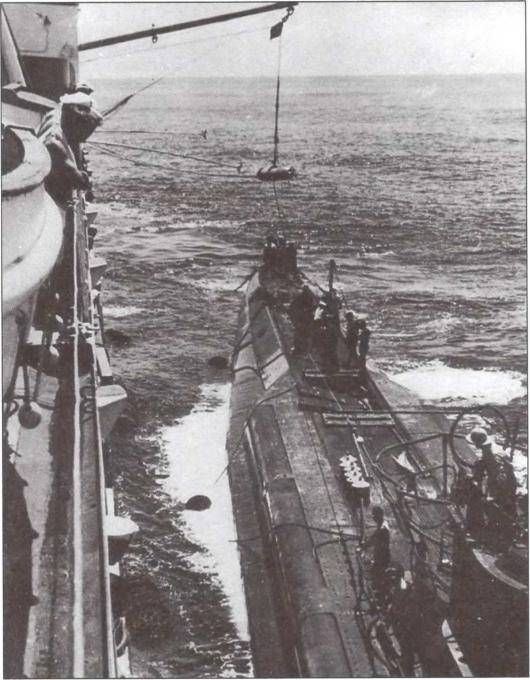
There were also signs of a landing ship (a hundred fighters to form boarding teams), a floating prison, and a reconnaissance vessel. Secretly making their way into the Pacific Ocean, one of the raiders collected an extensive array of information about the Northern Sea Route, which was later used to conduct military operations in the Arctic.
Pictures and radio interception are the most harmless that these ships could offer. They posed a real mortal danger in other conditions.
And we - without lights, so it will be more true. And the trade will be much more honest!
Raiders were not like auxiliary cruisers of other states.
The British Rawalpindi or the Japanese Hokoku Maru, former liners, were on the line of fire as a necessary measure. An alternative to large warships for patrolling ocean communications. The auxiliary cruisers did not hide their new appointment and proudly carried the flag of their country.
When the enemy appeared, the British sailors radiated the coordinates and died in an unequal battle. The Rawalpindi is the daring daredevil who threw himself under the guns of the Gneisenau. A similar feat was accomplished by Jervis Bay, standing in the way of Admiral Sheer.
In a duel situation with warships, such "cruisers" were doomed.
German raiders did not work like that. All the time they posed as harmless and stupid "traders". They went into action under the flags of allied or neutral states. And when they were calculated and tried to be shot, they screamed the loudest on the air about an attack on a peaceful "merchant" of an unknown warship, save who can! Kriegsmarine sailors had less honor and conscience than bones in a jellyfish.
Like submarines using the uncertainty and uncertainty of the aquatic environment, raiders took advantage of the uncertainty of the situation and the need for their adversaries to comply with maritime rules.
Cargo ship hulls were a tactical ploy. The Hilfkreuzers were specially created in such a way as to break through the blockade and dissolve in the ocean under the guise of civilian ships.
Armament was hiding behind bulwarks. A "masquerade" was used with removable chimneys, masts and false cargo arrows.
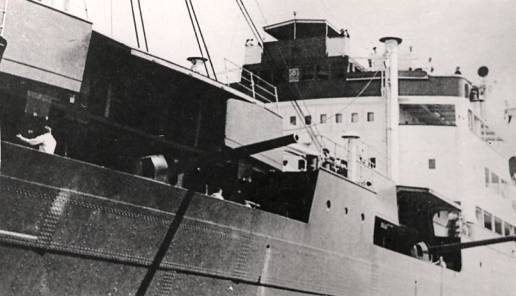
One of the few signs that a raider could issue was the lack of “color” in the crew of a merchant ship. The moment that pilots of patrol planes paid attention to.
For reconnaissance, the raiders used their own seaplanes with British identification marks. Noticing the next “victim”, the scout boldly flew up and dropped a package of instructions onto the deck. “A German raider is seen in the square. Use caution. Lie down on the Nord course. ”
On the Nord course, the Penguin was waiting for them. Holy naivety.
And who probably could have known how long it would last and how this crazy raid would end? ..
Hence the highest autonomy. The economical engine of a civilian vessel with an average fuel consumption of 38 tons / day with a diesel reserve of 4000 tons allowed the Penguin to cover a distance of 30 miles.
Desalination plants on board provided the raider with 15 tons of fresh water per day. More than enough for a crew of 400 people and hundreds of prisoners languishing on board.
Fritz prudently loaded everything aboard - from skis and kits of a tropical uniform to beads and trinkets for the inhabitants of New Guinea.
In case of the capture of unexpected captives, there was a stock of women's and children's things, toys and baby food.
In the premises intended for the imprisonment of crew members of sunken ships, the Germans installed microphones. Reveal an escape plan or eavesdrop on any information about the whereabouts of other ships.
Here death is like a bride. The circle narrows, and the bride has no playful friends!
The main armament of the “Penguin” consisted of six 6 '' guns (149 mm actual caliber), taken from the Kaiser ships of the line fleet, ammunition for 300 HE shells per barrel.
No matter how obsolete the guns of the German raiders seemed, the power of their shells was enough to smash the tower for almost any warship - of those that could be sent to capture them.
Opponents noted the training of German gunners. Despite the casemate location of the guns, in which only four guns could fire on one side, the fire performance of the raiders was an unpleasant surprise for everyone who tried to stop these killers.
In 2008, when examining the wreckage of Sydney’s wreckage, experts counted at least 87 hits with the main caliber! The consequences of the battle with the raider "Cormoran", during which the opponents sank each other. In total, the Germans managed to fire more than 500 shells from three guns (the fourth tank gun was demolished by the Sydney fire at the very beginning of the battle).
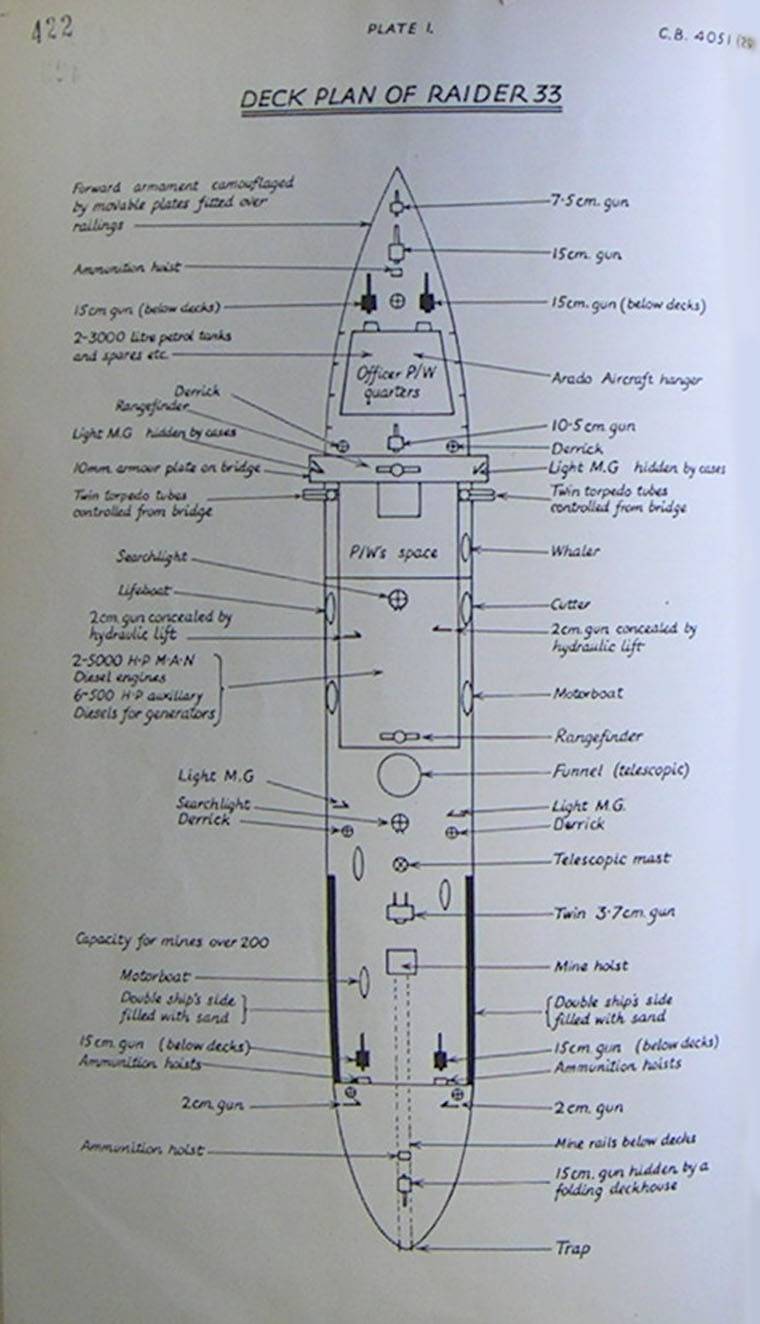
The design of the warship implied a more convenient placement of weapons with large elevation angles. But in the battle with the raider, this did not guarantee victory.
The raider simply refused to fight at long distances. At great distances, he continued to grimace, playing the "merchant". He took time to flee again in the unknown direction once dark.
The exception was the Atlantis, which was spotted at the time of the transfer of fuel to the submarine. "Covered" in the act!
In other cases, the raiders opened fire only when it became clear that exposure was inevitable. At this point, the distance between the opponents was reduced so much that the physical deterioration of the German trunks or a smaller base of rangefinders did not matter much (the Penguin had two rangefinding posts with a base of 3 meters).
However, some of the raiders (“Tor”, “Comet”) managed to get new six-inch “torpedocanone”, as on destroyers like “Narvik”.
In the presence of artillery of the same caliber, the raider and the opposing cruisers of British construction represented “crystal vases with clappers”. Under the circumstances, each was given a chance to inflict fatal injuries on the other. At the same time, raiders, as a rule, were much larger than their opponents. And purely because of the size they could hold out longer. While the constructive defense of most cruisers of the 1930s. could not prevent the spread of fire, the destruction of compartments or the loss of mechanisms from shaking with multiple hits of 6 '' shells.
The creators of the raiders also made efforts to increase combat stability. Armored bridge, double sides in the ammunition storage areas, the space between which was filled with sand.
In addition to everything, each raider carried torpedo weapons.
(The commander of the cruiser Cornwall.)
All further, until he enters the square, where, with the main caliber, fate awaits him.
The raider crew could disguise the ship as a merchant ship. Using open directories, he could reproduce his callsigns. The only thing the Germans could not fake was the reports of the allies. About the presence in the specified area of certain merchant ships. And it became fatal.
There should be no Tamerlan vessel to the north of Seychelles!
By that time, Cornwall had been following a parallel course for an hour, to no avail showing the signals “Stop the ship”, “Lie down to drift”. The frightened "merchant" did not respond to the threats, sending one after another radiograms of the pursuit of an unknown warship. The distance between the opponents was quickly reduced, reaching eight miles (according to other sources - 11000 m). Uncertain of the suspicious ship's accessory, the Cornwall fired a couple of warning volleys - and turned toward rapprochement.
Sirens howled on the raider, shields fell, the flag of the German Navy flashed on a gaffel. The Penguin fired the first salvo that landed dangerously close to the Cornwall.
And suddenly the unexpected happened: on the British cruiser, because of a short circuit, the armament refused! The telephone line of the fire control posts followed. At this critical moment, the Germans made a couple of direct hits at Cornwall. External damage seemed insignificant, but fragments interrupted the steering machine cables. An unarmed, uncontrolled ship rolled to the left under a hail of German shells!
The various descriptions of that battle vary in detail, but the general situation is paradoxical. At some point, there was a threat that the “peace bargainer” would deal with a cruiser like “County” ...
The only thing that saved Cornwall in that situation was a 203 mm caliber. Recovering after the first round, the cruiser regained control weapons and fired back!
Having got beyond the reach of the Penguin cannons and using his advantage in long-range guns, he began to shoot the raider in cold blood. Correcting volleys with a seaplane raised in the air. Not much time passed when the next four-gun volley tore the Penguin to shreds.
Of the 402 people of his team, 60 remained alive, and of the two hundred captured sailors on board, only 24 were saved.
During the battle, the British used up 186 main-caliber shells, the Germans managed to fire 200 rounds.
Despite all the safety measures taken and maintaining a considerable distance between the Cornwall and the suspicious vessel, the victory was not easy.
As for the other famous battle between Sydney and Cormoran, it is worthy of a separate analysis. The price of carelessness? Only in part.
Without taking the responsibility off of the Australian commander who allowed criminal rapprochement with the raider, given the technical features of the Hilfcruiser and the fury with which the raider attacked the enemy, Sydney had little chance at any distance.
Unlike the mighty Cornwall, the Sydney was armed with eight 152 mm guns. He was smaller and weaker than his colleague in all respects.
His adversary, “Cormoran,” on the other hand, was the largest and most armed of the Krigsmarine auxiliary cruisers.
The main thing that united these episodes was the inability to clearly identify the enemy. Which required approaching at a dangerous distance and inevitably put the pursuers under attack.
Based on:
Interrogations of the surviving crew of the Penguin (Interrogation of Survivors from Raider 33, October 1941).
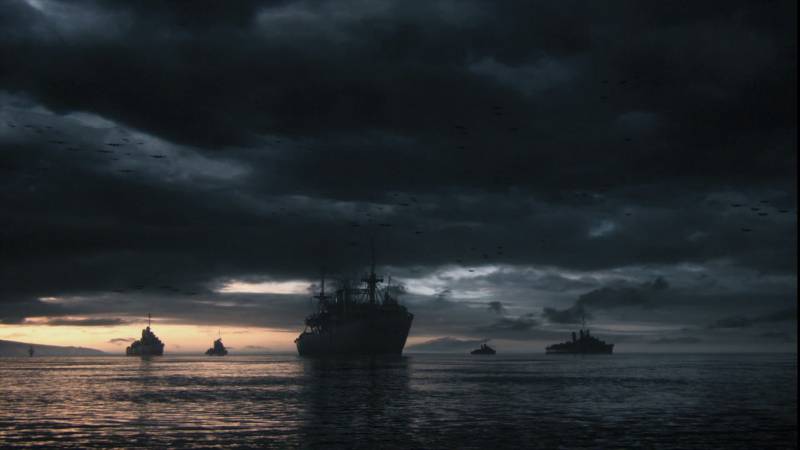
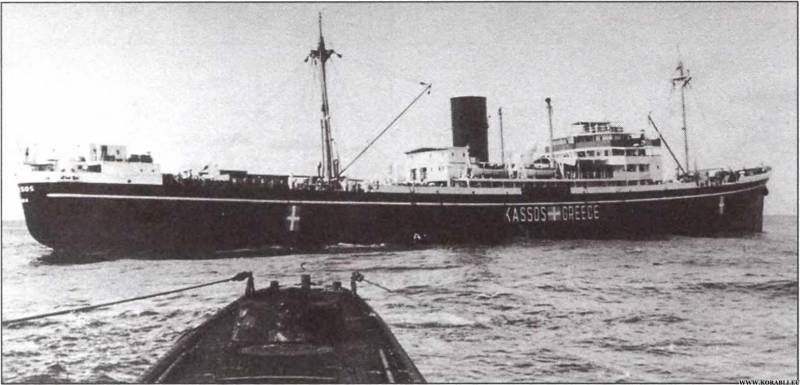
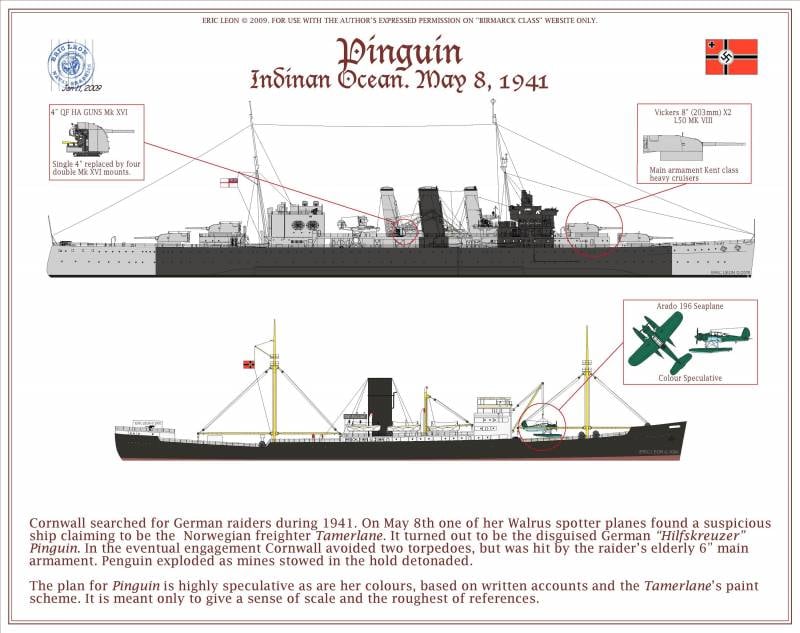
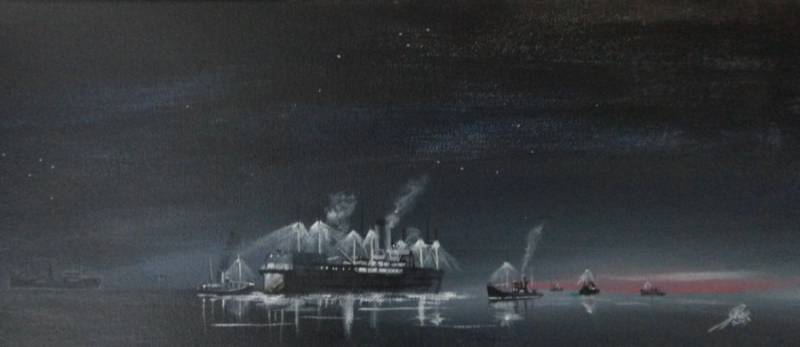
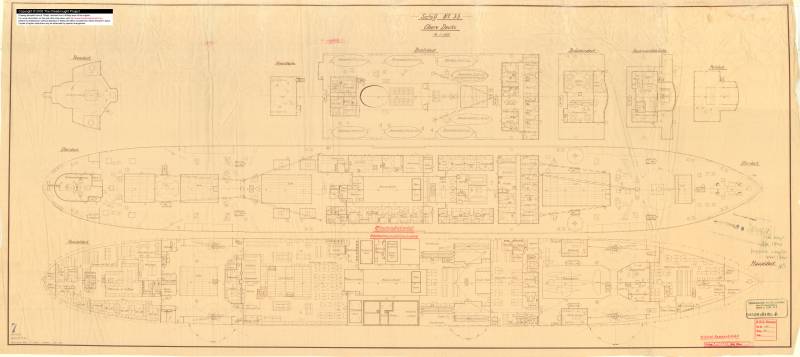
Information